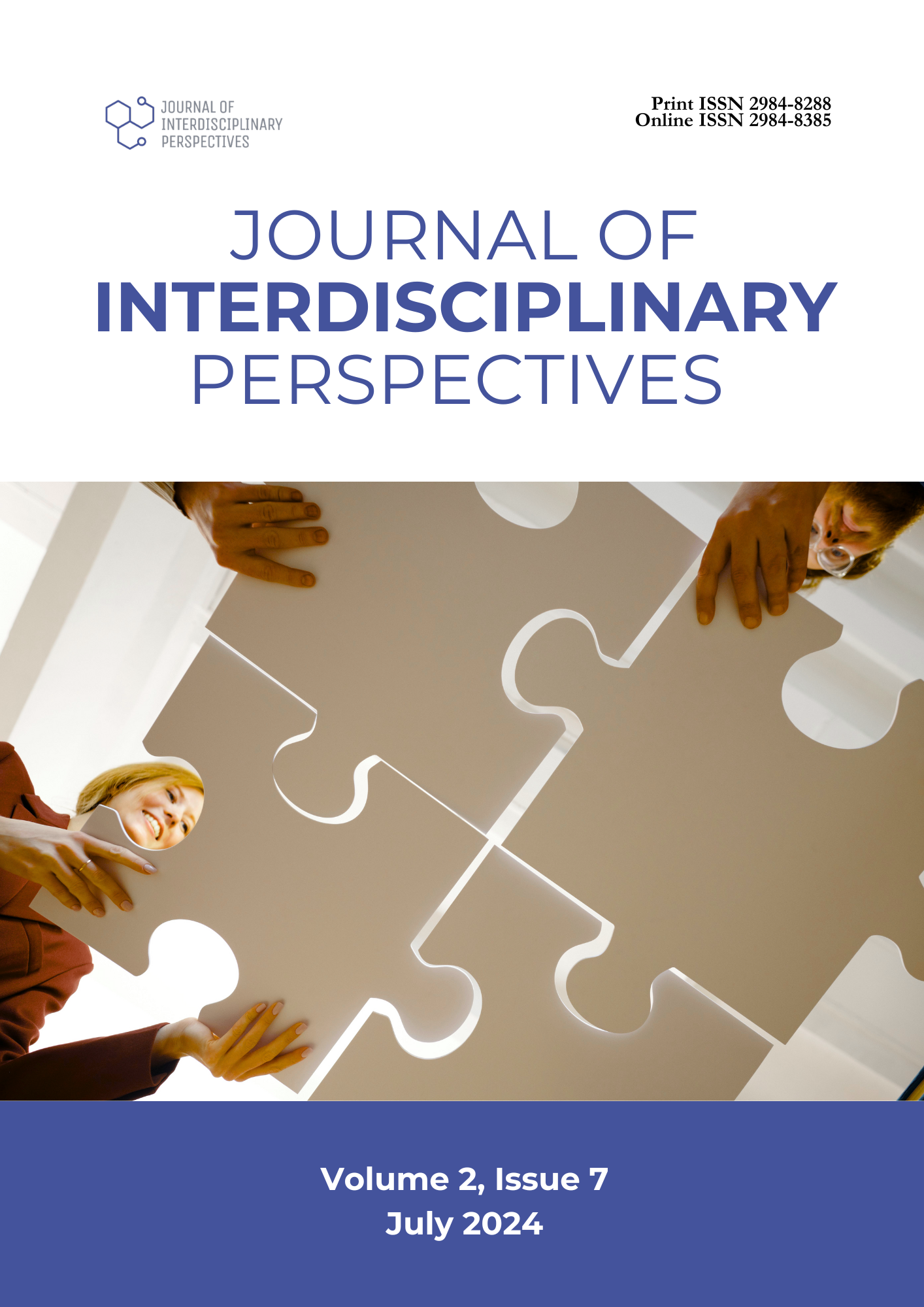Exploring the Effects of the Implementation of Anti-Child and Forced Marriage Ordinance among the Tagakaulo and Blaan in Malungon, Sarangani Province
DOI:
https://doi.org/10.69569/jip.2024.0002aKeywords:
Child marriage, Forced marriage, Arranged marriage, Government ordinanceAbstract
This study explored the effects of the Anti-Child and Forced Marriage Ordinance on the Tagakaulo and Blaan in Malungon, Sarangani Province. A mixed method employing quantitative and qualitative approaches, specifically concurrent triangulation design was used to gather relevant data. This study provided the customary practices of the indigenous communities in which the results showed the gender separation and taboos against premarital interaction between men and women. They also accepted polygyny and the separation of married couples. The marital practices of Blaan and Tagakaulo include child and arranged marriages as well as the instances of forced marriages where children married against their own will. Malungon enacted the Anti-Child and Forced Marriage Ordinance in 2018 to ensure children's education and protection. The results showed that the mentioned practices declined as it is prohibited, especially with the approval of RA 11596 or the law criminalizing child marriage. Even though there are violators in its initial implementation in the far-flung areas, results showed that both communities highly accepted the Anti-Child and Forced Marriage ordinance and the law criminalizing child marriage with the subthemes: education as a priority, protection, and welfare of their children, and negative consequences of early marriage. Furthermore, friendships and relationships are already accepted without requiring them to marry instantly. This study contributed to the understanding of the implementation of the Anti-Child and Forced Marriage ordinance followed by approval of the law criminalizing child marriage affected the customary marital practices of the Blaan and Tagakaulo communities.
Downloads
References
Arquiza, Y. (2001). Weaving a New Web of Life. INDISCO Case Study No. 7. https://www. lifemosaic.net/images/uploads/Resources/Docs%20(Eng)/Weaving_the_Web_of_Life.pdf
Baja, B. & Diaz, H. (2023). Kaksay na Pagpangugnan and Its Implication in the Lives of Young Tagakaolo Couples. International Journal of Social Science and Education Research Studies, (03)8, 1762-1772. https://doi.org/10.55677/ijssers/V03I8Y2023-34
Benito, N. (2020). Text and Context of the Blaan’s Folk Literature. JPAIR Multidisciplinary Research, 40(1), 56-66. https://doi.org/10.7719/jpair. v40i1.771
Bichierri, C., Jiang, T. & Lindemas, J.W. (2014). A Social Norms Perspective on Child Marriage: The General Framework. University of Pennsylvania. https://repository.upenn.edu/cgi/viewcontent. cgi?article=1012&context=pennsong
Calimoutuo, E., Liu, Y. & Mbu, B. (2016). Compendium of International and National Legal Frameworks on Child Marriage. World Bank Publications – Books. https://openknowledge.worldbank.org/server/ api/core/bitstreams/18 407372-c9d0-5292-8d55-7264244b7ee1/content
Christensen, J.D. (1997). An Independent View. International Labour Organization (ILO)-INDISCO Project. https://www.ilo.org/wcmsp5/groups/public/---asia/---ro-bangkok/---ilo-manila/documents/publi cation/wcms_469458.pdf
Clariza, E. (2005). The Concept of Power Among the Lumad: Mindanao’s Largest Indigenous Community.
https://www.angelfire.com/ amiga2/clariza/PDFonline-concept_of_power.pdf
Creswell, J. W., & Plano Clark, V. L. (2018). Designing and conducting mixed methods research (3rd ed.). Sage
Publications.
Deped Sarangani. Our History. https://depedsarangani.org/about-us/#:~:text=Sarangani%20lies%20in% 20the%20southernmost,formerly %20 part%20of%20South%20Cotabato.
Executive Order No. 209, s. 1987. The Family Code of the Philippines. https://www.officialgazette.gov.ph/1987/07/06/executive-order-no-209-s-1987/
Fernandez, E., Rodriguez, G., Reyes, E. & Quines. L. (2021). Blaan mythologies and their educational implications. International Journal of English Research. (7)6, 17-30. https://www.englishjournals.com/assets/archives/ 2021/vol7issue6/7-3-17-692.pdf
Garvan, J. (1927). A Survey of the Material and Sociological Culture of the Manobo of Eastern Mindanao. American
Anthropologist, New Series, (29)4. https://www.jstor.org/stable/ 661225?seq=9
Guiam, R. (2022). Enforcing the Law against Child Marriage. Hurights Osaka. (108). https://www. hurights.or.jp/archives/focus/section3/2022/06/enforcing-the-law-against-child-marr iage.html
Guiam, R., Espesor, J., Hassan, V. & Villanueva, E. (2013). The impact of early marriage practices: A study of two indigenous communities in South-Central Mindanao (T'boli and Blaan) from a human and child perspective.https://www.academia.edu/17588771/The_Impact_of_Early_Marriage_Practices_A_Study_of_Two_Indigenous_Communities_in_South_Central_Mindanao_Tboli_and_Blaan_From_a_Human_and_Child_Rights_Perspective
Hirai, H. (2015). Indigenous Communities in the Philippines: A Situation Analysis. Yuchengco Center. De La Salle University.https://www.researchgate.net/profile/HanayoHirai/publication/308742756_Indigenous_Communities_in_the_Philippines_A_Situation_Analysis/links/57edcbd708ae07d8d8f64d50/Indigenous-Communities-in-the Philippines-A-Situation-Analysis.pdf
Hanna, P., Vanclay, F., Langdon E.J. & Arts, J. (2014). Improving the Effectiveness of Impact Assessment pertaining to Indigenous peoples in the Brazilian Environmental Licensing Procedure. https://doi.org/10.1016/j.eiar.2014.01.005
Hirokawa, R. (2005). Introduction to Theories of Human Communication Lecture 10: Structuration Theory. University of Hawaii at Hilo. https://www2.hawaii.edu/~randyh/lect13.html
Matas, H. (2015). Pre-arranged marriage among Blaan secondary students: tales of joy and sorrow. International Journal of Advancements in Research & Technology, 4(6). http://www.ijo art.org/docs/Prearranged_ Marriage_Among_Blaan_Secondary_Students_Tales_ Of _Joy_ And_Sorrow.pdf
San Jose, A. (2021). Customary Conflict Resolutions among Tribes: Young Indigenous Peoples’ (IP) Perspectives in Focus. Southern Philippines Agri-business and Marine and Aquatic School of Technology. http://dx.doi.org/10.2139/ssrn.3912612
Tinio, E. L. (1993). The B’laan: A Tribal Cultural Community of Davao del Sur. (Doctoral dissertation). Ateneo de Davao University-University of Mindanao, Davao City.
United Nations Fund for Population Activities (UNFPA). (2022). Child marriage - Frequently Asked Questions. https://www.unfpa.org/child-marriage-frequently-asked-questions)
Wang, V. (2016). Ending child marriages – new laws bring progress but hurdles remain. Bergen: Chr. Michelsen Institute, (4) 8. https://www.cmi.no/publications/5802-ending-child-marriages-new-laws-progress-Malawi
Downloads
Published
How to Cite
Issue
Section
License
Copyright (c) 2025 Journal of Interdisciplinary Perspectives

This work is licensed under a Creative Commons Attribution-NonCommercial 4.0 International License.









